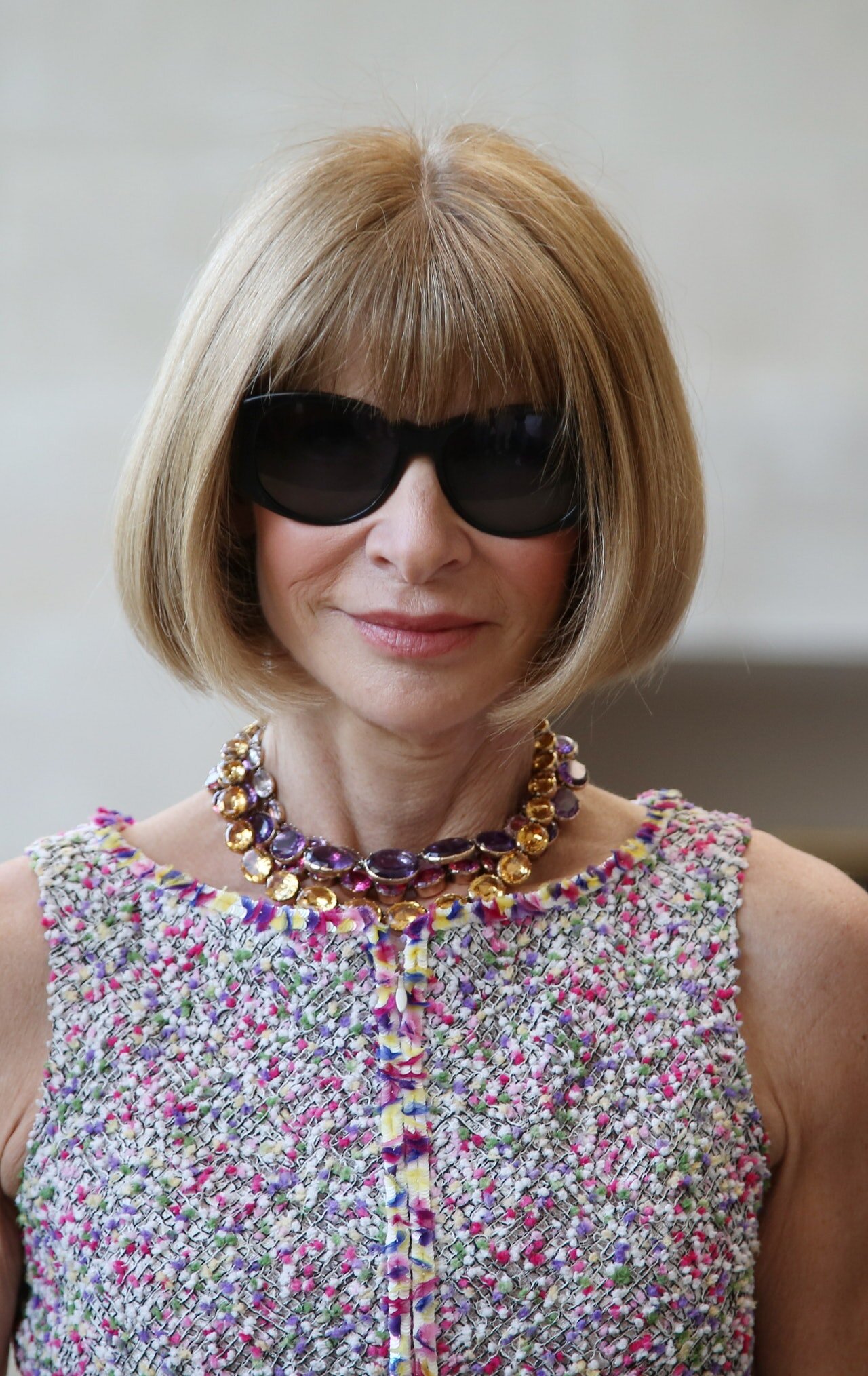The inherently idiosyncratic nature of personal style is, well, personal. The way we get dressed everyday says a great deal about our personalities, our priorities and aspirations. This idea is more than a passing thought if you work within the fashion industry, where the phrase “dress for the job you want” isn’t a platitude but a truism. Whether you believe that your personal style exists outside of the fashion industry (and that you just threw on a random blue sweater this morning) or if you look into your closet thinking “what would Anna Wintour wear?” before starting your day, the EIC definitely has a decades-strong, consistent style worth studying.
The patterns, textures and fabrics people out on their bodies are all part of the narrative they construct for themselves, about themselves. No one knows this better than the artistic director for Condé Nast and editor-in-chief of Vogue, Dame Anna Wintour. This being said, let’s turn the psychological lens of the Big 5 model (sometimes referred to as the acronym OCEAN) onto Anna and decode some of her outfits - to see what her style choices convey about her personality.
Anna dressed in matching muted grays and tweed textures. Photo: vogue.com.au
OPENNESS - Moderate-High
Holding such esteemed positions in a creative industry suggests an innate inclination toward experimentation and open-minded thinking. This holds true in Anna’s early work, as she was the first editor of American Vogue to run stories centered around non-fashion topics, such as infertility and mental health. Unabashedly talking about wellness in the context of fashion points to her forward-thinking nature, but exactly how woke is Anna today? She’s better known for her bobbed hair and inclusion into Vogue’s legacy than she is for progressivism. It seems her strength lies in her ability to discern what is on-brand for the glossy mag rather than break the rules of it. Her personal style mirrors this mindset, as she seems to lean toward the uniformity of a matching set and rarely strays from a classic silhouette. All the more reason to believe she scores more on the moderately high end of the scale for this trait.
CONSCIENTIOUSNESS - High
Anna is notorious for her pragmatic work ethic and proclivity for order. If this isn’t indicative enough of someone who scales high on the conscientious scale, then her style choices, unchanging lithe physique, and that immaculate bob are definitely a tip-off. Consistently sporting kitten heels, printed midi-dresses and conformist tailoring - Anna demonstrates a tendency to gravitate towards moderation and thoughtfulness in her wardrobe. Through her practical and elevated style, Anna communicates that she is someone who is capable of managing a team as large as the entire art department for Condé Nast.
Friends André Leon Talley and Anna Wintour out in New York. Photo: vogue.com
EXTROVERSION - Moderate-Low
Take a moment to imagine Anna in a meme-able moment that doesn’t include a stoic expression. That’s right- you probably can’t. She’s often pictured wearing understated, yet chic, designs that don’t draw a ton of attention to her. Being a woman of her stature is enough for us to assume she can work a room, but her personal style hints that she is more introverted than extroverted. Not to mention that the last pictures we saw of Anna partying were from her nights out in New York with André Leon Talley in the 80s. Nevertheless, she often alludes to a more former social side with a statement necklace.
AGREEABLENESS - Low
Let’s talk about the sunglasses. Whether they serve as a personal reminder to be unreactive or function as a way of cultivating mystery, Anna is notorious for shielding her thoughts during runway shows behind those signature shades. She’s also pictured FROW in a large fur coat, which is, by today’s standards, a coat that communicates that the wearer is not a shrinking violet that seeks approval of the public. This quality is a strength in Anna’s case, considering how her position at the Vogue office requires her to be confrontational and critical of people’s work.
Signature sunglasses and statement necklaces on Anna Wintour.
NEUROTICISM – Low
“Florals? For Spring? Groundbreaking.” If the dry cadence of Meryl Streep in The Devil Wears Prada just flooded your imagination, then I probably don’t have to tell you that she was playing Miranda Priestly. A character meant to evoke Anna Wintour, or that florals are, in fact, still a springtime essential. Anna wears them herself (granted, most often in the summertime) along with Chanel tweeds and patterned dresses. Her personal style points to someone who scores lower on the neurotic scale and are similar to the style choices reflected in her work. An example of this being the understated covers for the January 2020 Vogue issue that were thematically centered around maternity and earthliness.
Overthinking and self-doubt are often side effects of people who do scale higher on the so-called dark trait. Neither of which are obstacles for Anna, considering her ability to effortlessly handle having all eyes on her. She’s states that “people respond well to those that are sure of what they want. What people hate most is indecision. Even if I’m completely unsure, I’ll pretend I know exactly what I’m talking about and make a decision,” which is truly a testimony to her self-assurance. That’s Anna for you, although she sometimes fakes certainty, she keeps her fur, and of course her Prada, real.
To find out your own Big 5 scores, take the test below.














In the world of post-pandemic dressing, one word has taken social media by storm: cheugy (pronounced: chew-gee). In the worlds of fashion and lifestyle, cheugy describes a look, a thing or a person that’s considered out of date.